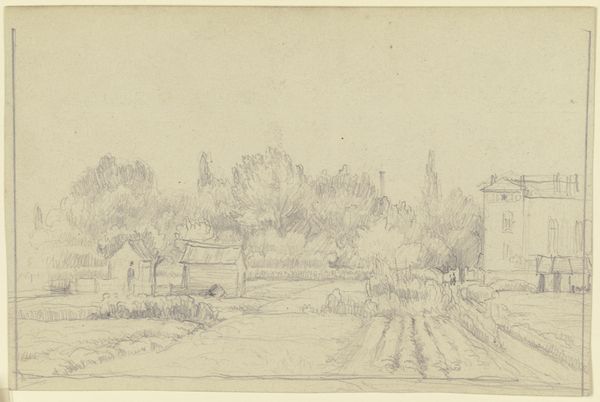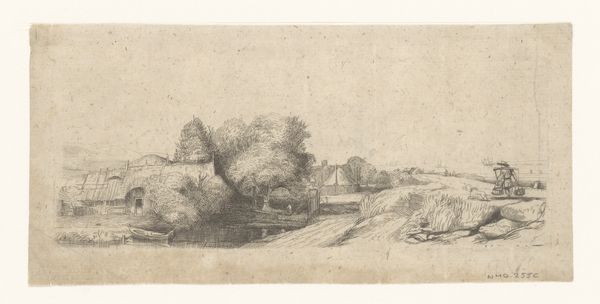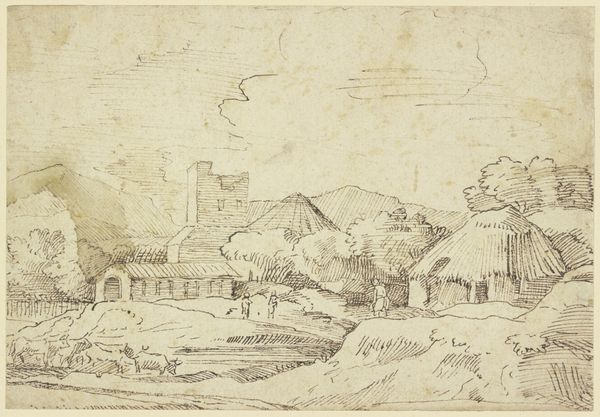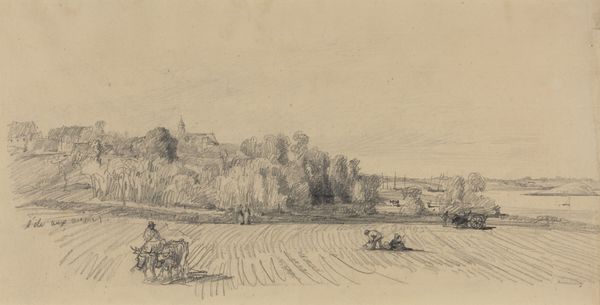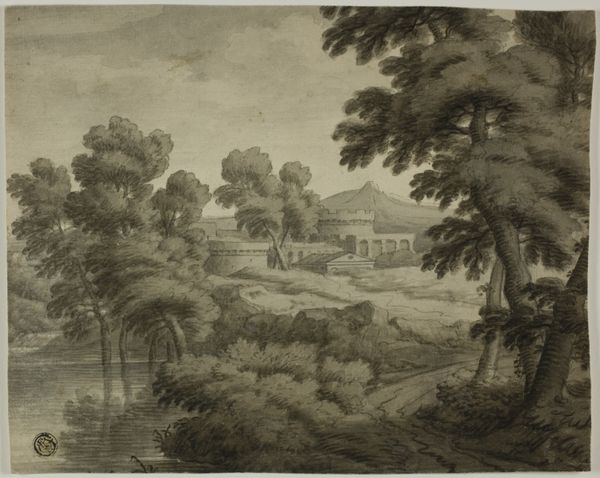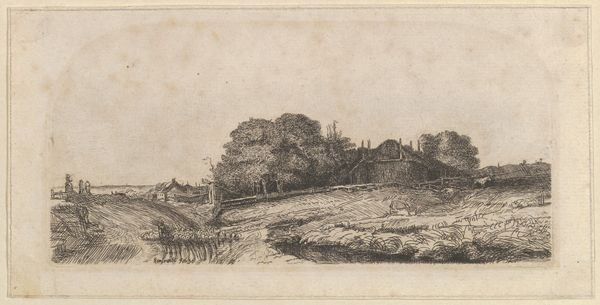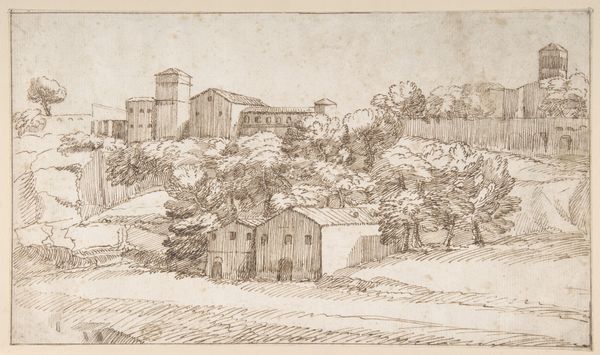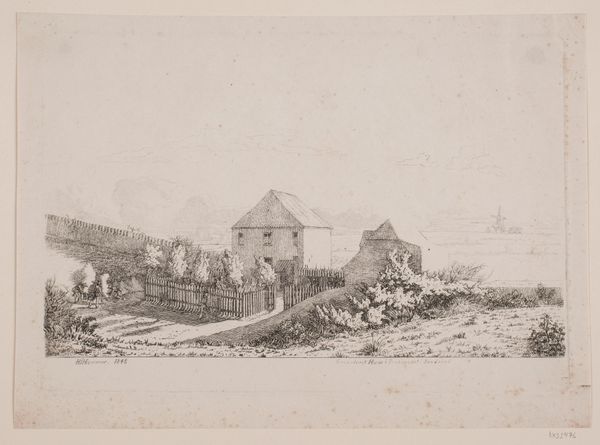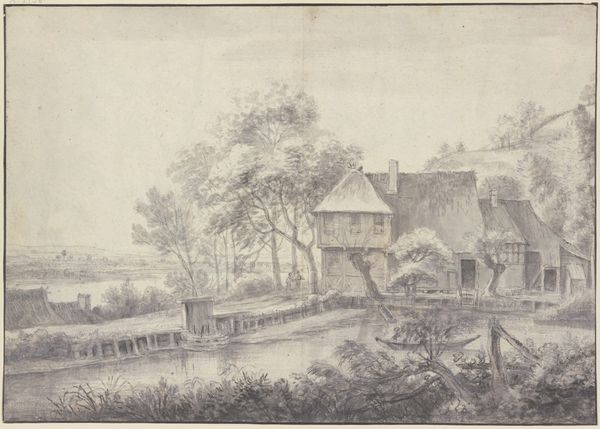
drawing, pencil
#
drawing
#
16_19th-century
#
pencil sketch
#
landscape
#
pencil
Copyright: Public Domain
Curator: Immediately, I’m struck by the atmospheric perspective. It's like a hazy dream. Editor: Well, this pencil drawing is titled "Flachsfeld in Neusalz an der Oder" by Otto Scholderer, created around 1886. It now resides at the Städel Museum. It feels very… fragile, doesn't it? Curator: Fragile, but also revealing. We often think of the late 19th century in terms of burgeoning industry, but here, we see an intimate, rural scene, rendered in delicate detail. It shows the realities and struggles of rural existence alongside hints of growing industrial presence. Editor: Yes, there’s that single chimney stack on the horizon that immediately complicates any reading of simple pastoral tranquility. I find myself wondering about labor and land ownership in this period. Who owned the flax fields? Who toiled in them? Curator: Those are key questions. Scholderer, though associated with the Leibl circle and often painting bourgeois interiors, reveals here the landscape as a site of work, of production. The figure in the foreground almost blends into the field, suggesting perhaps a visual metaphor for the worker's connection to the land, or, their submersion into it. Editor: Absolutely. It also makes me think about the economic shifts underway at the time. Flax production, while seemingly bucolic, was intensely tied to industrial manufacturing and global trade. Curator: The buildings juxtaposed—the rural sheds against a more imposing structure further back—also emphasize the social contrasts emerging in Germany. Scholderer captures a society at a crossroads. Editor: It feels important, then, not to romanticize this image, but to use it as a lens through which to examine the complex relationship between rural life, industrial advancement, and class structures. The seemingly tranquil is laced with tension. Curator: Indeed, the pencil medium itself contributes. The softness of the lines, the unfinished quality, highlights the tentative nature of progress. It's not a celebration but a study. Editor: It’s a stark reminder that what may seem like a quaint historical landscape is actually imbued with layers of socio-economic reality. Looking closely urges us to ask harder questions about the lives, labor, and landscape itself. Curator: Exactly. And, I think this drawing pushes us to confront the simplistic narratives about the era's modernization. We can remember the image now for its subtlety. Editor: A testament to the power of art to reflect not just what we see, but the unseen forces that shape our world. It stays with you.
Comments
No comments
Be the first to comment and join the conversation on the ultimate creative platform.

